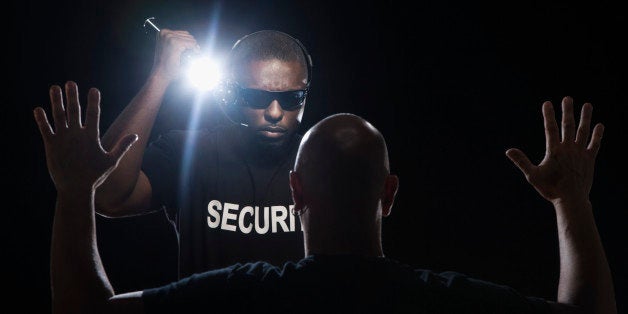
This is the second part of my 3-part series following the Zimmerman verdict. In my last post I talked about the position of the flaneur as one of white privilege and how that played out in the Zimmerman trial. In this post I look at New York City as an example of how the delimiting of black and brown wandering occurs, how that intersects other planning logics, and who benefits from it.
When we say a city is becoming "livable," whom do we imagine living there? What if livable for you means unbearable for someone else?
I have been wondering, since the Zimmerman verdict, if New York City under Bloomberg has been not only suburbanized but Floridafied. With this provocation of Floridafication I am implying not only the site of Zimmerman's violence in Sanford, but also the broader context of Seaside and Celebration, where New Urbanism and Disney, respectively, launched their masterplanning efforts into American primetime. If you have read my previous posts on the death of Trayvon Martin, you will know that I am considering Zimmerman's violence and the failed legal system around it as a systemic violence that needs to be considered spatially.
Monday, a District Court judge ruled New York City's Stop-and-Frisk policing to be unconstitutional, in violation of the 4th and 14th Amendments of the Constitution and racially biased. Despite this, the Judge did not order NYPD to halt Stop and Frisk, but only to "reform" it. Perhaps with this ruling and the demand for "reform" we can begin to consider the challenging question of how these policing practices intersect Bloomberg-style urbanism: an urbanism that has broadened and expanded Rudy Guilliani's Disneyfication project. The Bloomberg era of New York City has been defined by the spread of luxury-style real estate amenities -- waterfront parks, bike lanes, streets converted into piazzas -- many of which civic-minded urbanists like myself appreciate.
Yet, when we consider the legacy of Bloomberg urbanism, how do we separate amenities such as private-public waterfront parks from the unconstitutional Stop-and-Frisk policing? The past decade in New York has seen increased development and maintenance of public open space, but also the intensive policing of that open space -- from Stop-and-Frisk to the warrant-less search of backpacks on the subway. Has Stop-and-Frisk been the price that we pay for public-private open space and redeveloped waterfront parks? Has the city become dependent on a tax base of development that expects a large population of the city to be effectively policed out of public space?
In Monday's District Court ruling, Judge Scheindlin's decision, as published in the New York Times, states
It is impermissible to subject all members of a racially defined group to heightened police enforcement because some members of that group are criminals...
I also conclude that the city's highest officials have turned a blind eye to the evidence that officers are conducting stops in a racially discriminatory manner
Might we consider these tactics and the 'blind eye' of the highest officials even part of the boom story of Brooklyn and its $3,000 rent, famously approaching that of Manhattan? Yes, you are living in a Borough with over 1 million black and brown people, more than 25 percent of them poor. But don't worry -- thanks to effective policing that intimidates and molests them, you never have to worry about seeing them in public! As a systemic violence, the Stop-and-Frisk policy of the NYPD might be considered the policing equivalent of Stand Your Ground. Search first -- ask questions later.
I am pondering these relationships between Stop-and-Frisk policing and public-private planning as someone who worked on city planning within Bloomberg's administration. As an Urban Designer for the Department of City Planning directly out of graduate school, I worked on a number of re-zonings and masterplans. It was our department's job not just to figure out where streets and towers should go, but also to remind the economic development professionals that a neighborhood of 5,000 people should have things like a school and a library. For unoccupied industrial sites like Hunters' Point South , this worked out remarkably well. But in places like Willets' Point we ended up with community board meetings full of people wearing stickers that read "Blight me," and other cleverly contentious tag-lines.
One of the most disturbing meetings I had while doing this work was a meeting between Department of City Planning and a New York City architecture and planning firm that was contracted to do much of the design for a large masterplan in Queens. The planners from the private firm eagerly explained that they saw the project in Queens as similar to a district they had planned in Florida, one that transformed an area from "Latino gangs" to "families and shopping." I am paraphrasing years after the fact, but I distinctly recall the shock of hearing them openly and patently mention either "Latino" or "Hispanic" as effectively synonymous with blight, in a room in which I was the only non-white (and most junior) professional.
How does the city, or any city, decide who gets a new park and who gets blighted? Can the question of who gets blighted ever be disaggregated from the question of who gets stopped and frisked or otherwise threatened out of their own neighborhood? As an urban designer I stand with the entertainers who boycott Florida until the Stand Your Ground Law is repealed. But in our field the boycott may need to start from the inside, from within our own learned precepts and methods.